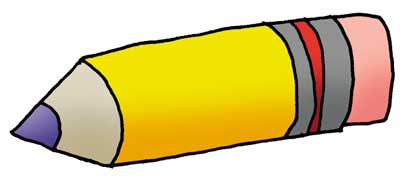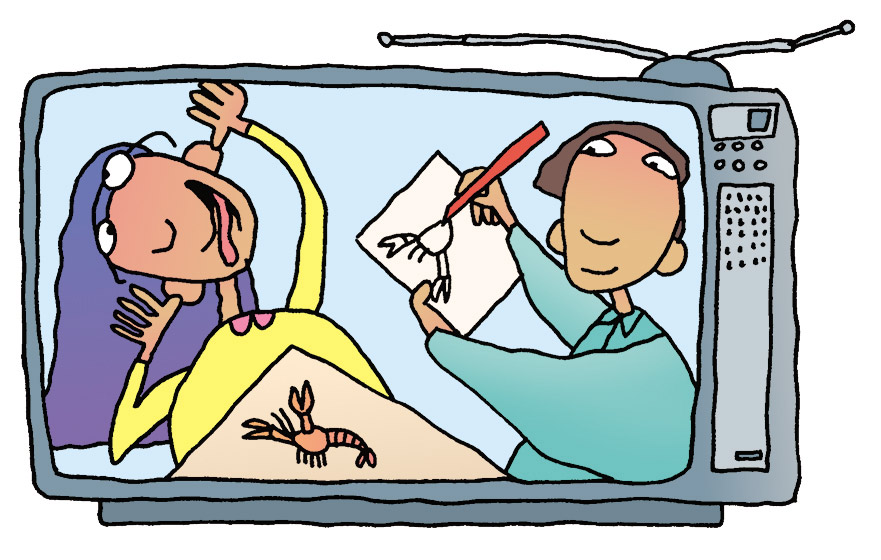
How can we help our students develop writing skills? We can take the rigorous approach, teaching the writing process, academic modes, and integrated grammar. We can also use the creative approach, engaging students' imagination and artistic expression through stories and poems. Unfortunately, the demands of standards-based testing are pushing the creative approach out of many ELA classrooms. Let's not let that happen in ours. Students profit when we make time for both types of instruction, since each approach benefits the other.
The rigorous approach builds foundational skills for clear communication, skills that lead to compelling stories, poems, and plays. On the other hand, creative writing develops expressive skills that produce more robust, original thinking in academic forms of writing.
Furthermore, creative writing engages students in ways that purely academic forms often don't. When we assign creative writing activities, we demonstrate that writing isn't some big scary animal, but instead can be liberating, imaginative, and fun!
Consider using the following writing activities to get your students' creativity flowing onto paper.
Story Starters: But What Happens Next?
Have students read the following story starters. Ask them to choose their favorite and write what happens next, keeping the story going as long as they can. As an alternative, they can create a new starter and then tell the rest of the story.
- The sound coming from the sewer was unlike anything Lilly had ever heard. Whatever it was, it was getting louder and moving closer. . . .
- When Jimmy stepped outside on that bright sunny morning, the ground sank beneath him. He reached up, grasping for something—anything—when finally . . .
- What Chelsea would do that day was the bravest thing of all.
- Dequan flung his controller at the game screen. Instead of hearing a sharp crack, he heard a digital splash. Baffled, Dequan looked closer for damage and realized the black controller, now shrunken and animated, rested in the hands of a character on screen. “Want to play a game?” the character asked, moving the joystick forward. Dequan jolted toward the screen. . . .
- Four suited figures in dark shades searched menacingly for the key to the safe, not knowing the key lay hidden in my pocket.
- The egg at my feet shook and cracked open. A scaly wing unfolded from it, and then another. Before long,I was staring into the groggy eyes of a baby dragon.
- Have you ever wished you could go back in time and do something over again? Today, I got that chance.
- No one could have guess what would happen when the students took over the school. . . .
View Minilesson for Classroom Presentation
Diary of a #2 Pencil

Challenge students to write a diary entry or blog post from the perspective of an everyday object from school (pencil, paintbrush, microscope, and so on). What would the object have to say if it could “write” a diary about its daily life?
Here’s how a student might begin a diary entry from the perspective of a pencil. . . .
October 20, 2017
Dear diary,
Today, I was sharpened. This was a very big deal because I had an important job to do today. . . .
View Minilesson for Classroom Presentation
Sound Off with Onomatopoeia
English has many words that sound like what they name. For example, sizzle sounds like frying food, and buzz sounds like the beating of a bee's wings or static on an amplifier. This similarity of sound is called onomatopoeia. Present students with a list of sound words, like those in the table below:
| splat | whish | sploosh |
| gunk | whump | poing |
| gush | whoop | slurp |
| oomph | bonk | thwack |
Then have them choose their favorite sound word and list all the ways in which it could be produced in real life. Encourage students to think of as many ways as they can, no matter how wild the ideas may seem. Finally, have them organize their ideas into a list poem like the example that follows:
Splat is . . . a hippo doing a belly flop.
an egg hitting the floor.
fat rain slapping a windshield.
water landing in an empty stomach.
a cream pie in the face.
atoms colliding.
View Minilesson for Classroom Presentation
Creative Synopses

Have you ever read a brief synopsis of an upcoming movie or television episode? These short, playful previews provide their own form of entertainment. Can you guess the films these short synopses refer to?
- A young queen flees her kingdom after causing an eternal winter, but her fearless sister sets out to thaw the frigid spell.
- A gentle alien stranded on Earth befriends a young boy.
- The dark side is out for revenge on an icy planet as a villain tracks down his nemesis.
- An affable new assistant works to avoid the scorn of her fashionista boss.
(Answers: 1. Frozen; 2. E.T.; 3. Star Wars: The Empire Strikes Back; 4. The Devil Wears Prada.)
Your students can play a similar game by creating their own short synopses of their favorite movies, books, or topics of study. Follow these steps to introduce the activity:
- Choose a topic for the synopsis. It could be a favorite movie, book, or school subject.
- Present a model, and ask students to guess what it summarizes. For example, a synopsis of a social studies topic could be A united group of colonies fights for sovereignty in a new world. (Answer: American Revolutionary War)
- Point out that the synopsis should provide a general sense of the topic without revealing too many specific details. For example, advise students to avoid proper nouns such as character names and settings.
- Provide time for students to write their synopses. If they struggle to distill their topics to one sentence, recommend that they write two or three sentences and decide what details to combine or eliminate.
- Have students exchange their synopses with partners to see if they can guess each others' descriptions, or read each response aloud and have the class guess the answer.
View Minilesson for Classroom Presentation
Additional Activities
Interested in more creative writing ideas? Check out these five fun activities, or browse a host of creativity-inspired minilessons.